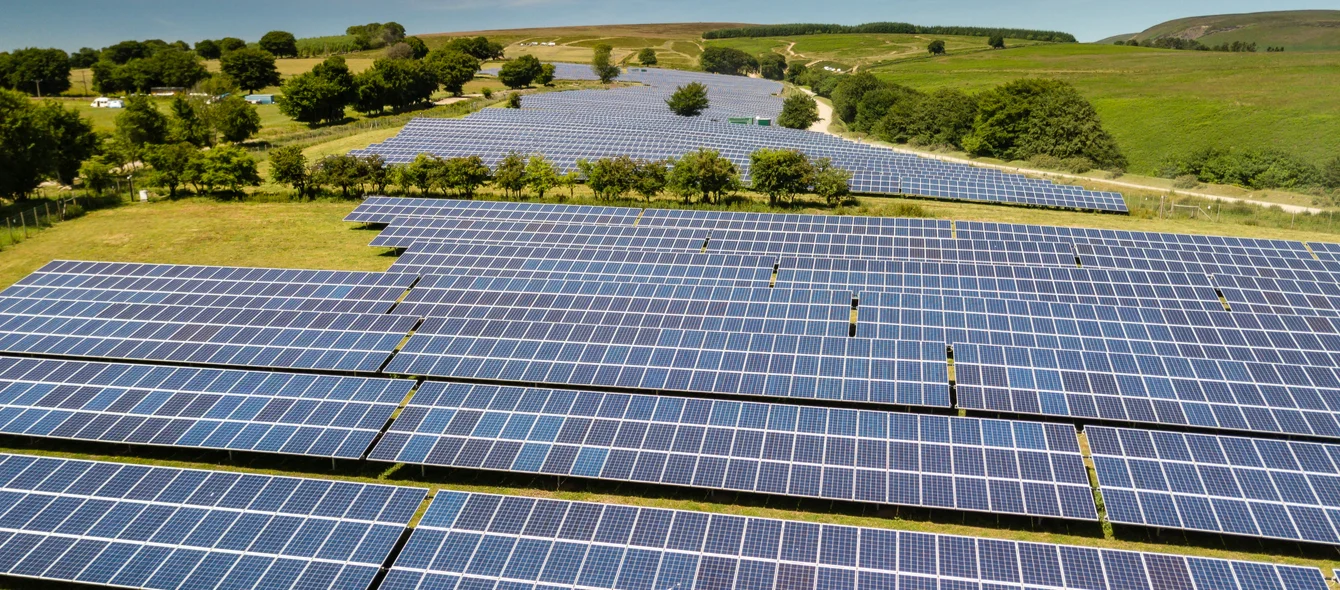In the International Energy Agency’s (IEA) Net Zero by 2050 report, published in June, the agency outlined a global pathway to net zero, in which the deployment of all renewable energy sources needs to accelerate substantially. In the UK, and northern Europe more broadly, there is a focus on developing the region’s vast offshore wind resources. But, while an expanded wind sector is a critical component of the region’s decarbonisation efforts, solar energy, by 2050, emerges as the largest single source of energy generation in the IEA’s analysis.
Solar pathway
Solar capacity in the UK has developed in fits and starts. It jumped from just 95 MW in 2010 to 1 GW in 2011. By 2014, it had reached 5.5 GW and then leapt forward again to 9.6 GW in 2015, largely driven by the availability of government subsidies. However, over the next four years, a period in which costs fell below the need for state support, the deployment rate slowed, leaving capacity in 2019 at 13.3 GW, less than a third that of Germany.
A further 663 MW was added in the 12 months to March 2021, following the end of government subsidies last year, reflecting solar energy’s competitiveness versus other forms of generation. The UK currently has just over 14 GW of solar capacity installed.
40 GW by 2030
In a new report, Lighting the Way; making net zero a reality with solar energy, industry association Solar Energy UK argues that, as for offshore wind, the UK should adopt a 40 GW by 2030 target for solar energy. It is calling for a clearer pathway for solar development to bring the speed of deployment into line with the country’s net zero carbon targets.
The association is not alone in reaching the conclusion that the speed of solar deployment is insufficient to meet the UK’s climate targets. The UK’s Climate Change Committee (CCC) estimates that by 2035, wind and solar need to supply between 75–90% of the UK’s electricity, with solar alone delivering 60 TWh a year, a near five-fold jump from 2019. Deployment of 40 GW by 2030 is, in fact, the minimum level consistent with the UK’s 2035 climate targets, according to the CCC.
New policy framework
Solar Energy UK says policy changes are needed to support an average annual deployment rate of 2.6 GW a year to get to 40 GW by 2030. These include, for utility-scale developments, changes to planning consents, network charging and business rates. In addition, the report advocates guaranteeing solar projects access to the Department of Business, Energy and Industrial Strategy’s contracts for difference scheme.
In the commercial-scale project area (4 kW–5 MW), capital allowances for solar projects and support schemes for public bodies should be extended, while building regulations should be aligned with energy efficiency goals to support the installation of solar power. For the residential sector, the association recommends zero rate value-added tax for solar energy and energy storage assets, support for retrofitting and changes to building regulations to encourage solar uptake.
Benefits
Developing different forms of renewable energy generation is highly beneficial for the electricity system because, although variable, they have different generation profiles on a daily and seasonal basis, which tend to complement each other. Winters, for example, when there is less sunlight in the UK, are windier, while the summers are sunnier but with less wind. Bring in marine sources of energy generation and dispatchable biomass, and the amount of guaranteed power generation rises, reducing the challenge of variability. An electricity system incorporating a wide range of renewable energy resources and with a wide geographic distribution – the wind is almost always blowing somewhere in the UK – creates a system which is genuinely stronger, more reliable and resilient, than the sum of its parts.
Moreover, as with offshore wind development, solar energy deployment is a major driver of much-needed economic growth as the country recovers from the Covid-19 pandemic. Accelerated growth in the solar sector would create an additional 13,000 full time jobs and generate a minimum of £17 billion in additional economic activity, according to the Solar Energy UK report.
